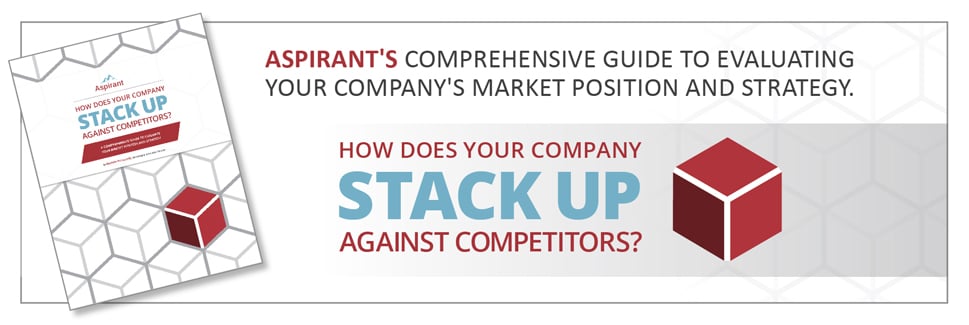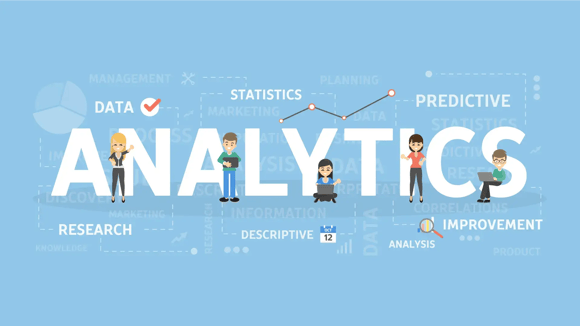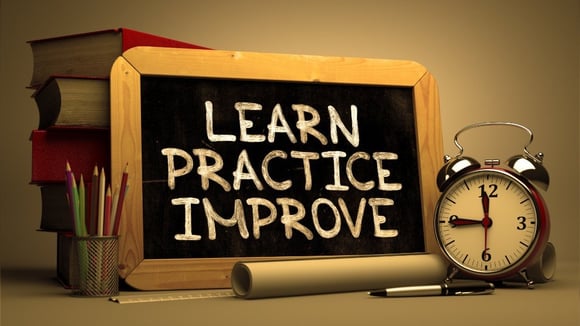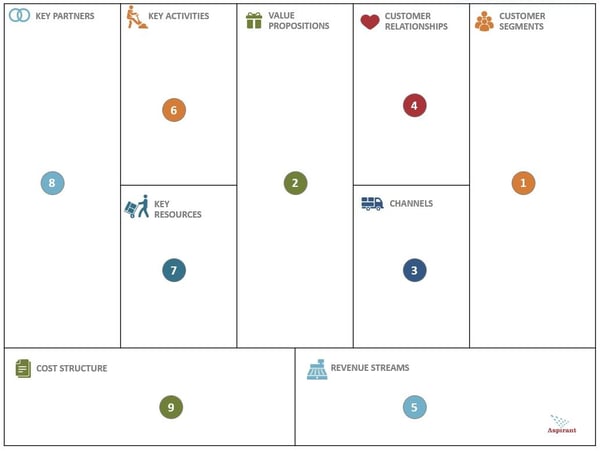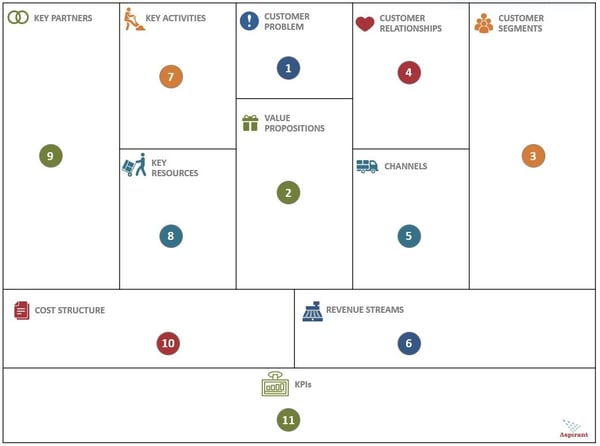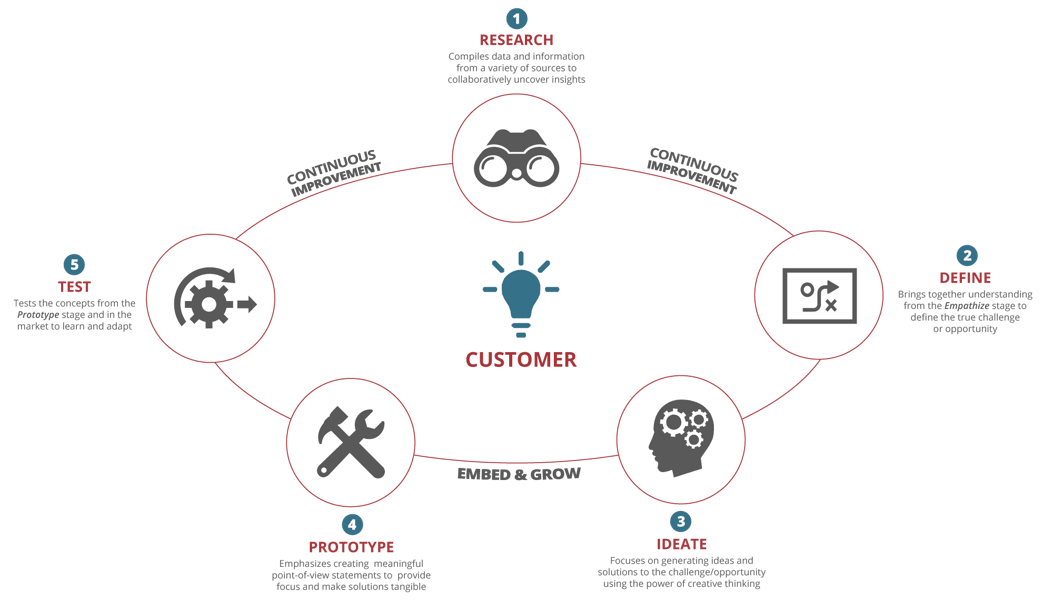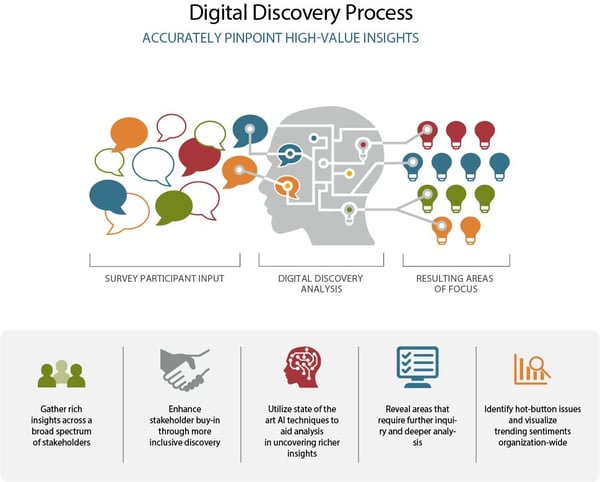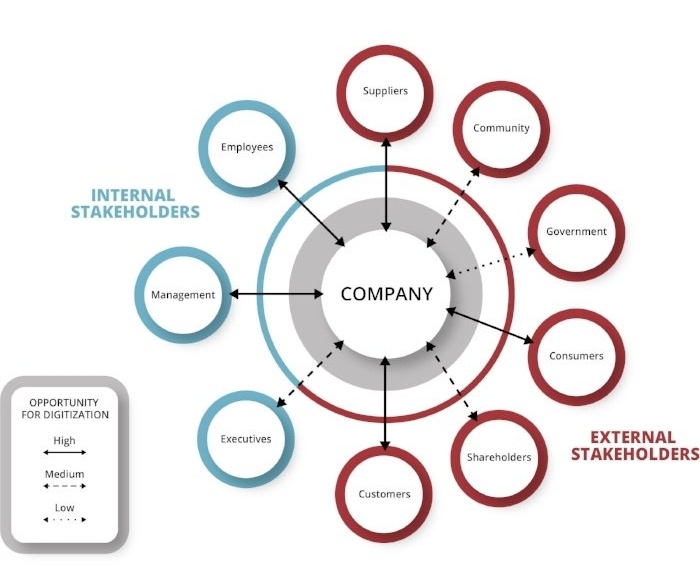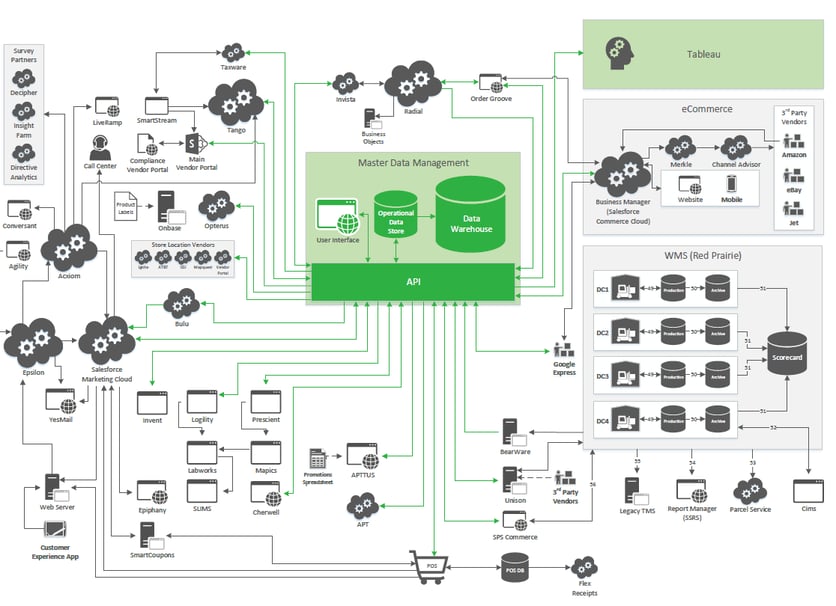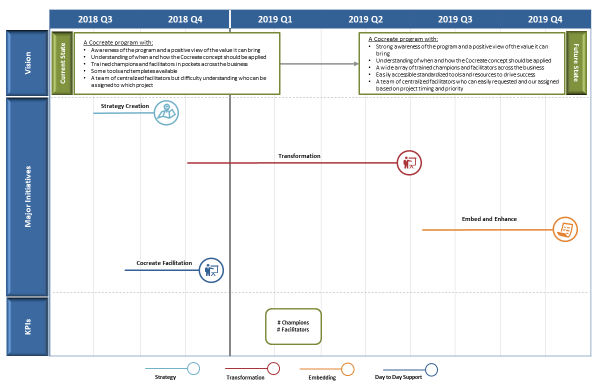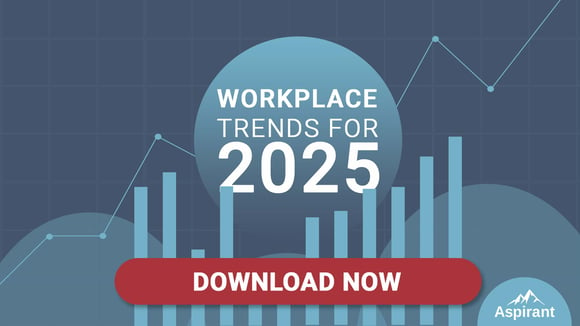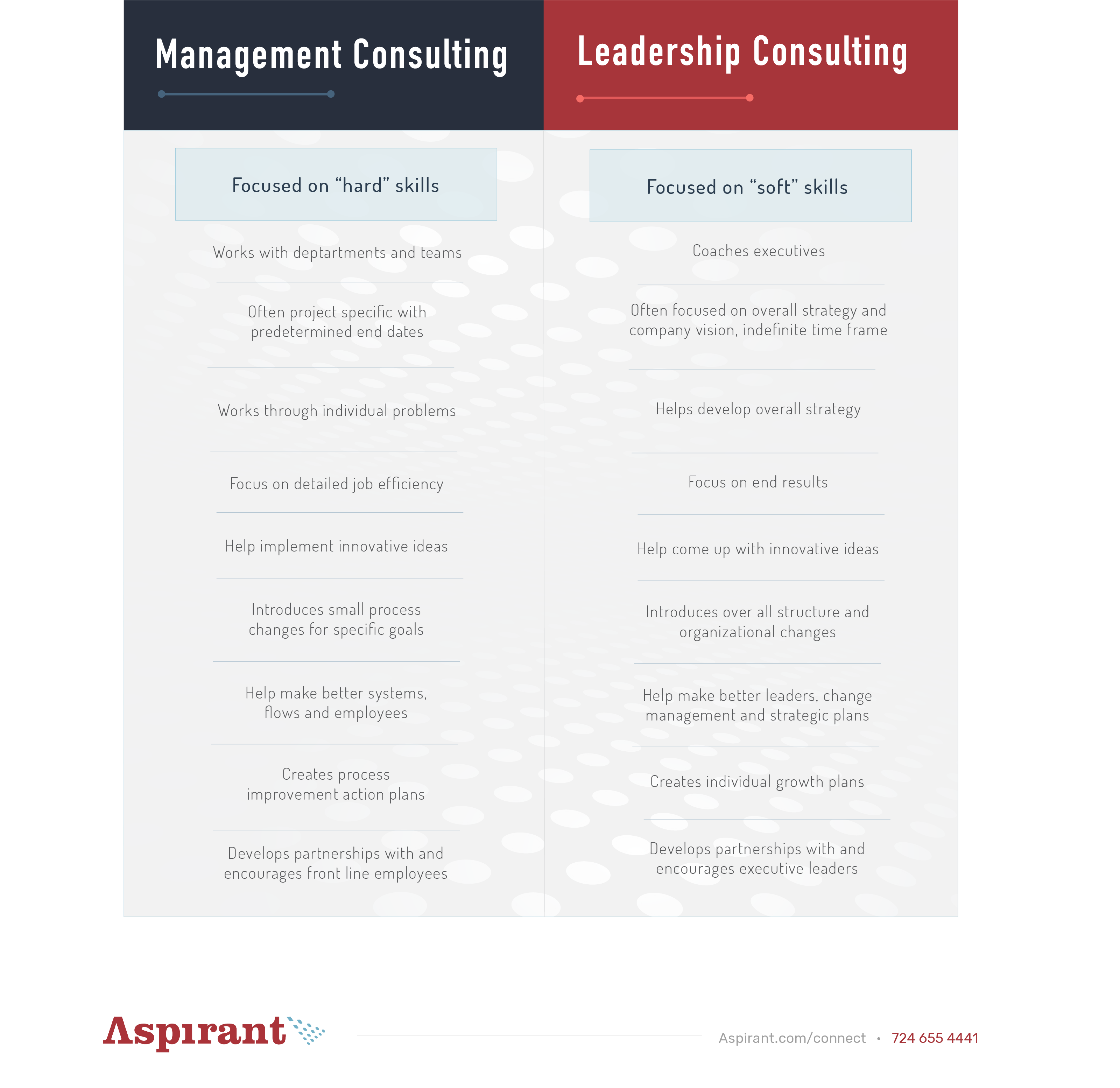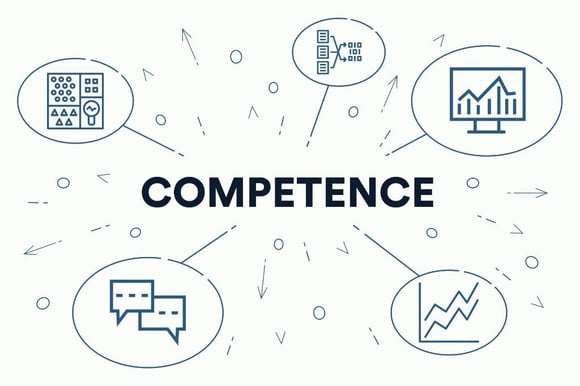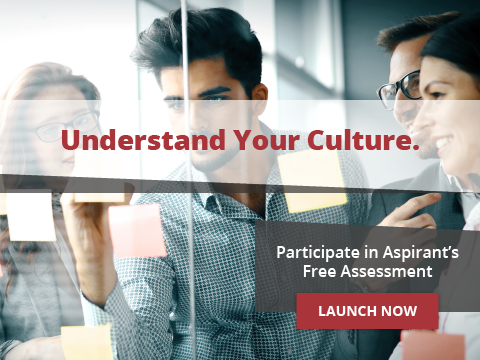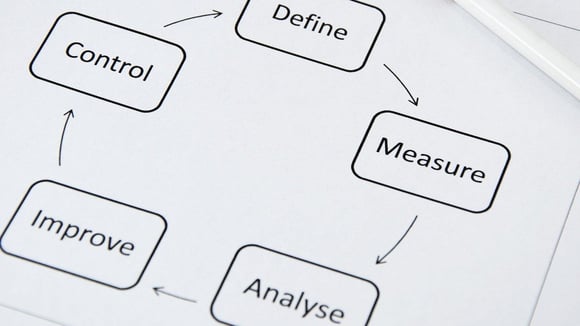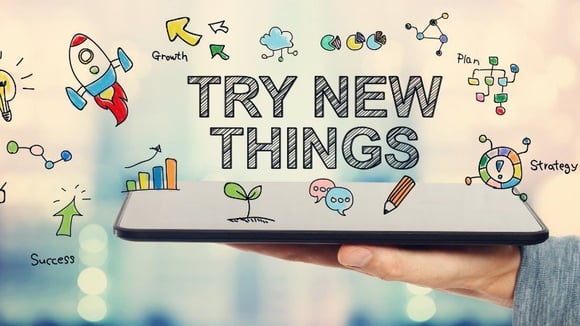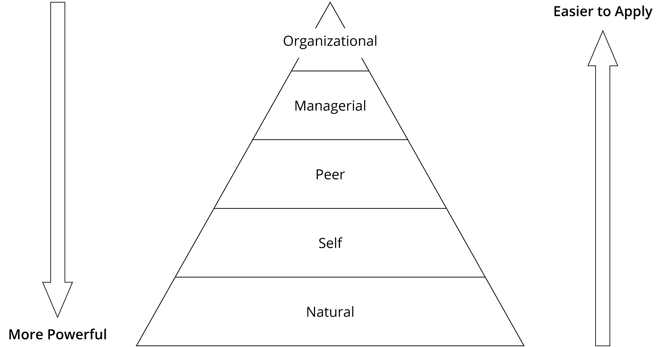After building your organizational strategy, you will be ready to translate it into a marketing strategy. Here is our approach to create clarity that fuels more impactful differentiation and successful marketing campaigns.
The best fishermen don't throw a line in the water and just hope for the best. They go after a specific fish, know exactly what that fish loves to eat, and only hit the lake when those fish are hungriest. They even know when it's time to try another lake. Effective marketing campaigns require the same type of insight.
Thinking through the questions below will help ensure the features, positioning, and promotion of your product / service will resonate with your intended audience. Use the link at the bottom of this page to download templates and examples of the mentioned marketing strategy tools.
Along the way, we will provide simplified examples from the perspective of a boutique coffee shop, Café Nitro, to help illustrate the concepts at hand. These examples and the corresponding templates can be downloaded via the link at the bottom of the page.
Who is your target audience and what do they want / need?
It may be surprising, but marketing strategy should always begin with the end user - not what you are trying to promote. This anchors everything you do to their mindset. To analyze the psyche of each market segment, marketers often build a 'Persona'. A Persona is a profile for a fictional individual who represents a specific market segment. The appropriate number of Personas to develop will vary by the complexity of your offering and the variety of consumer perspectives.
Each Persona typically contains the following elements:
- Name and relevant personal details (e.g. age, ethnicity, gender, location, level of education, job title, company). We like to include a photo with each persona to make them seem more human.
- Related goal(s) and motivation establish what they are trying to accomplish and why.
- Pain points based on circumstantial challenges and/or shortcomings of the competition.
- Preferences and considerations that play into their buying decision.
- Summary of the ideal solution for overcoming the pain points and achieving satisfaction.
Personas make each segment much more relatable, simplifying the process of finding ways to create value for them, elevate their perception, and influence their decision making.

How will your solution be the best option for them?
Sustainable business success is based on the ability to provide customers with more value than the competition. The details in your Personas will identify the primary drivers of 'value' for the corresponding market segment. The next step is to specify how your product / service will stand out from the competition by doing a better job of satisfying their needs.
Benchmarking Direct & Indirect Competition
You will need to consider how all relevant alternatives stack up against the target audience's needs and preferences. The competitive set and evaluation criteria will likely go beyond what is mentioned in the Persona.
As with most analytical methods, your benchmarking can be as basic or as complicated as you would like. Taking time to create a ranking algorithm based on weighted criteria and numeric scores would add nuance to clarify how competitors compare to one another. If available, include third party data like consumer ratings or reviews (Google, Yelp, Amazon, etc.) to account for the prevailing market perception - even if that perception is entirely off-base.
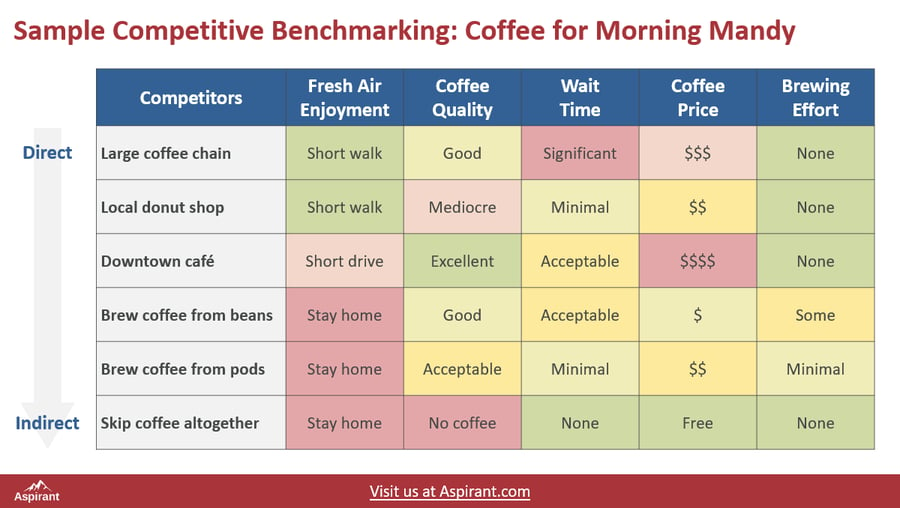
Develop Compelling Positioning
Knowing what your target wants and where the competition is missing the mark will point you directly toward how you can gain an advantage by addressing the unrecognized / unmet / underserved consumer need. Now it is time to compile the specifics of how you will create that competitive advantage. A piecewise approach helps guide that thinking:
- Target: Call out the demographics, perspectives, and attitudes that describe your consumer base. B2B businesses may want to include relevant company attributes (annual revenue, number of employees, industry) and individual job titles (functional department, seniority). This info should be specific enough to be insightful but general enough to represent the base that will make up the majority of your sales. That broader group (and the corresponding details) may stretch beyond the scope of your Personas.
- Offering: List the product(s) and/or service components that are relevant to the combined audience. No need to include any qualifying support; this should be factual and objective.
- Benefits: Cite the thematic qualities of the elements in the Offering section that create value for the Target audience.
- Reasons to Believe: Substantiate how the qualities listed under Benefits will be achieved. (What will make our coffee 'great-tasting'?). Focus on angles that are meaningful to your Target and create differentiation / superiority versus your competitive set.
- Put It All together: Using the prompts and referencing the supporting detail, populate the top boxes with phrasing that can be combined into a summary of how you will provide what they seek.
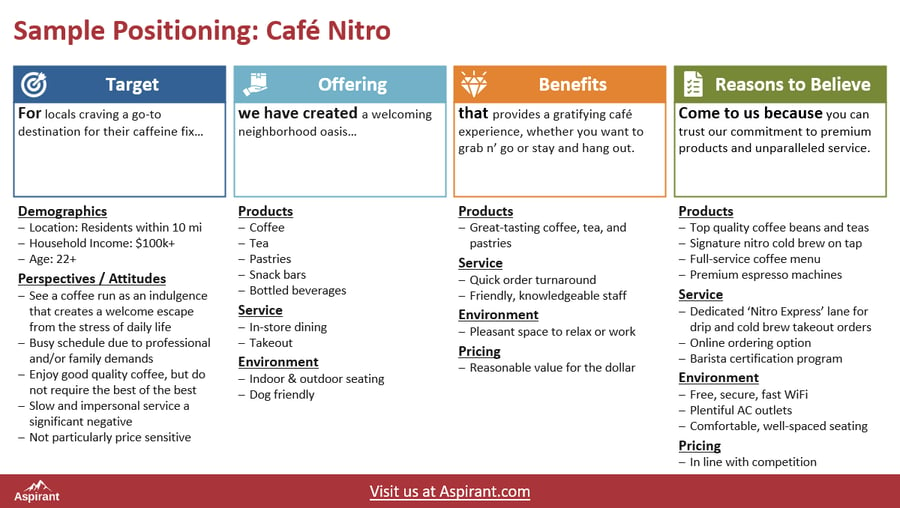
Why should they care about / believe in your solution?
Get inside your target's head. Break down the logic behind their decision making to identify what you need to tell them to change their mind, and in turn, change their actions. Building a Task Map for each Persona is very useful to that end:
- Need State - Summarize their perspective in terms of how they are unable to achieve the satisfaction they seek.
- Current Behavior - How are they currently acting?
- Current Belief - What do they believe that drives them to behave this way?
- Future Behavior - How would you like them to act instead?
- Future Belief - What must they believe to behave in order to behave this way?
- Barrier(s) - What perceived truth(s) are preventing them from progressing from Current Belief to Future Belief?
- Task - What does this Target need to realize in order to break through the Barriers and adopt the Future Belief?
This will clarify the talking points your targeted segment will find most compelling and convincing.
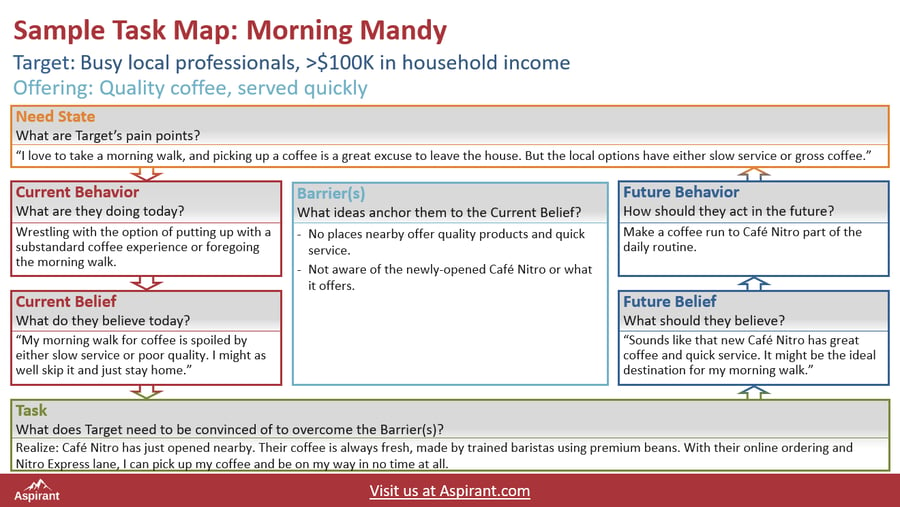
When should they be thinking about your solution?
Building awareness with your end users is always positive. But to maximize the chance of converting visibility into revenue, you need to reach them in 'moments of truth'. These are situations before, during, and after their purchase that they consider what they will do, are doing, or have done. If you have the time, building a Customer Journey Map for your Personas would help determine these critical moments by thinking through how they are thinking, feeling, and acting at each step along the way. A multi-faceted campaign can then be constructed to align with each of those touchpoints.
For a streamlined approach, you can start with identifying when your target is most likely to need what your company offers. Highlighting the benefits of your product / service at the right time can create a very direct route to conversion.
How will you tell them about your solution?
Now it is time to put it all together: building a plan for reaching the right people with the right message at the right time. From the wide variety of marketing tactics available, it is critical to favor the ones that can do this job efficiently, and ideally during those 'moments of truth'.
The options fall into three categories, based on the medium by which your message is delivered:
Traditional Marketing
This is comprised of static, offline channels such as:
- Terrestrial radio
- Printed newspapers and magazines
- Broadcast, satellite, and cable television
- Outdoor signage such as roadside billboards
- Direct mail
Pros: These channels offer a method for reaching a broad audience where the goal is to build maintain awareness for an established product intended for everyone and there is not much need for target-specific messaging (McDonald's, Coca-Cola). They are set-and-forget; once deployed, they will run under the specified parameters without any oversight.
Cons: Pricing for these programs is based on the scale of their reach, making them inefficient for reaching audiences that are only a subset of the general population. Larger companies have access to volume discounts, compounding their advantage over smaller competitors with less to spend. Properly gauging performance in terms of impressions, engagement, conversion, or ROI is either difficult or simply impossible, minimizing the opportunity to learn from results. Being offline, they are inherently further removed from the action you are hoping to stimulate (check out your website, visit your store, buy your product).
Recommendation: Universally deprioritize Traditional Marketing until you are confident that there is no further upside from your Digital Marketing programs.
Digital Marketing
Digital Marketing is, of course, defined by the digital means that connect you with your target audience.
'Outbound' tactics reach out to serve your content to the targeted audience. Think of them as the dynamic, online versions of their Traditional counterparts:
- Streaming radio
- Digital newspapers and magazines
- Streaming video and television
- Social media
- Email outreach
Online research has become central to most of the decisions everyone makes day-to-day. By anticipating how your target will use the internet to find products / services / companies like yours and preparing accordingly, you can create consideration in this most critical 'moment of truth'. This is how 'Inbound' tactics generate incoming purchase interest in the form of site traffic, emails, phone calls, store visits, etc.
- Search engines
- Online business listings and rankings
Pros: The ability to target people individually exponentially improves efficiency and effectiveness. Performance metrics for these tactics are detailed and readily available, enabling continual refinement and ROI calculation in real time. Where the success of Traditional campaigns depends on spending, Digital campaigns excel based on informed planning. That dynamic creates the opportunity to compete with, and prevail against, MUCH larger competitors.
Cons: Designing, deploying, and managing these programs properly requires a set of skills that can only be developed and honed through first-hand experience.
Recommendation: Businesses of any size, industry, and marketing budget should exclusively focus on fully optimizing their Digital Marketing programs (Inbound, then Outbound) before investing any time or money elsewhere. Partner with established Digital Marketing experts in order to flatten the learning curve for yourself and accelerate the realization of business results.
Local Marketing
By 'Local' we are not referring to localized Traditional or Digital campaigns. Here, we are talking about self-organized activations in the immediate vicinity of your business. Creativity, elbow grease, and familiarity with the local community are needed in order to execute these programs well. Due to the minimal benefit relative to the time requirements, Local Marketing tactics typically don't make sense for large companies. But they can be an excellent way to forge a lasting emotional connection with the community.
- Promote, sample, and/or sell directly at regional festivals, events, and trade shows
- Join a networking group made up of other local business owners
- Create a cross-promotional partnership with related, non-competing businesses
- Hand out product samples or informational flyers on nearby sidewalks
- Place / improve branded signs on / near your business
- Sponsor adult or youth sports teams / leagues
- Host an open house at your facility or offices
- Participate in Adopt-a-Highway
Pros: Local Marketing initiatives often require more effort than dollars, which could equate to a very attractive ROI. Some could create an opportunity to make a sale on the spot. Face-to-face interaction with your target audience and partnerships with other area businesses can pay dividends for years to come.
Cons: The reach and corresponding upside is inherently limited. It is often difficult to find the time to devise and execute these programs. Risk that event-based tactics fall short of expectations due to inclement weather or other external circumstances.
Recommendation: Collaborate with colleagues and friends on building a list of Local Marketing ideas. Identify complementary businesses that might be interested in future cooperation. Keep an eye out for the opportunity to participate in programs or events that are already being planned and promoted. Once your Digital Marketing is well established, find low-risk ways to get your feet wet in Local Marketing.
Getting started: Framing a marketing strategy
Much like the preceding Strategic Planning Process, you may not have considered the marketing strategy concepts listed above. Hopefully the Café Nitro examples will help you utilize these frameworks in building an effective strategy for marketing your business. Click on the button below to download those examples and the blank templates, all in one file.

The next step will be to put that strategy into action. Click here to check out our suggestions for how companies behind the curve can jump start their Digital Marketing.
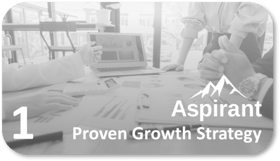
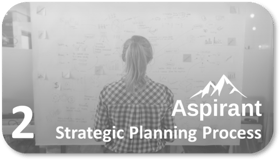
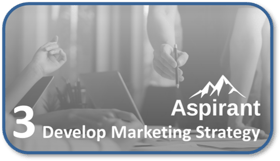
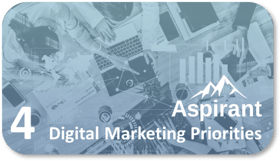
How Aspirant Can Help
We are proud to have built a client base spanning Fortune100 corporations to local companies to non profit organizations - and everything in between. We apply the best practices from those programs along with our Integrated Expertise to support businesses of all shapes and sizes achieve their goals. Use the form below to request a free exploratory discussion about how we can do the same for your organization.
We'd love to help you build a marketing strategy that gets real results.
Let's Connect!


















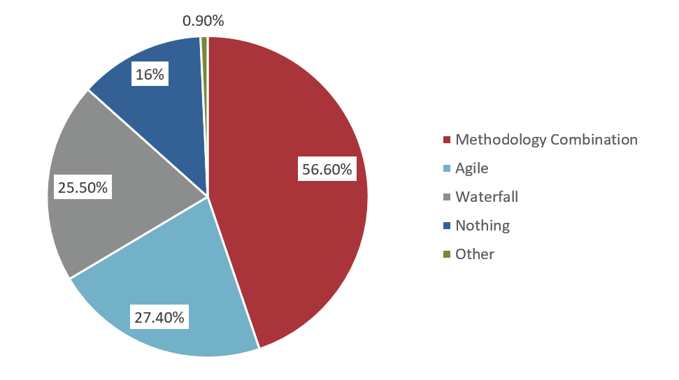
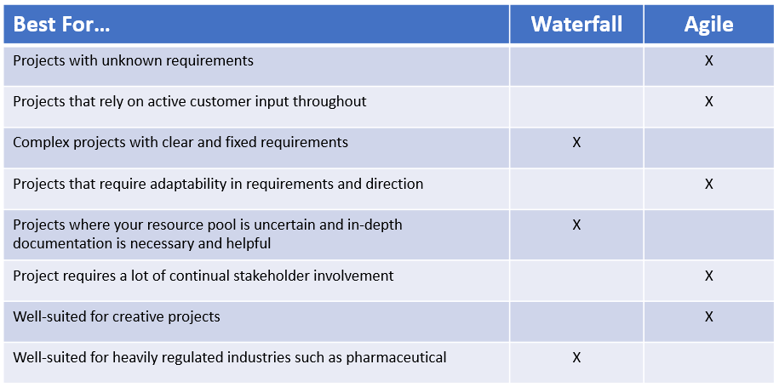
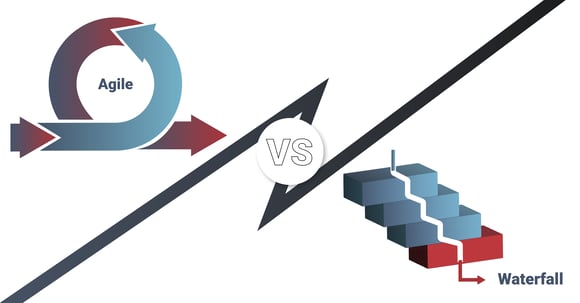



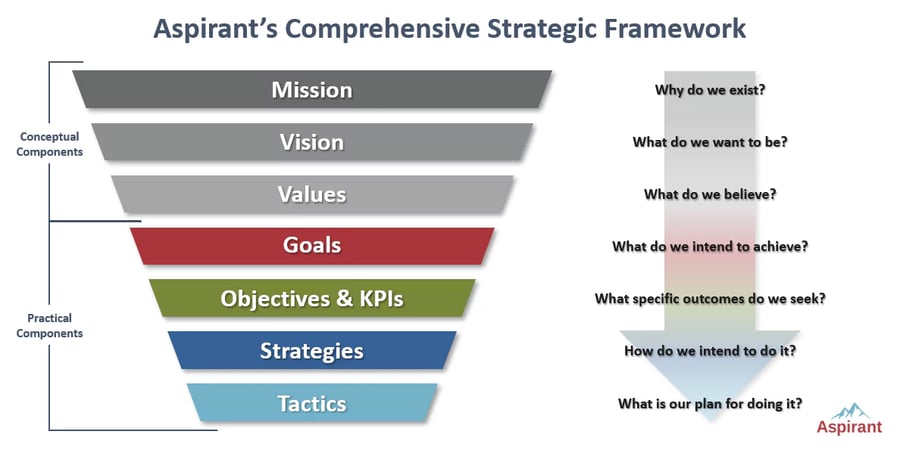

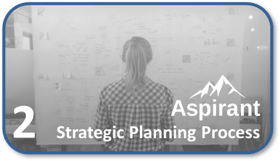
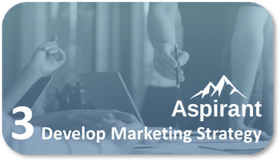


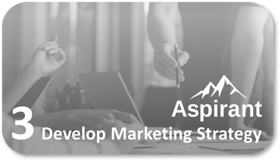
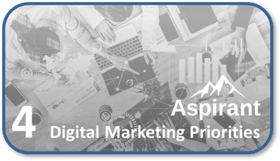

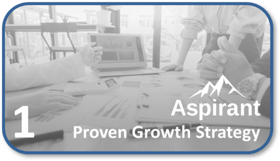
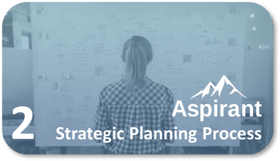
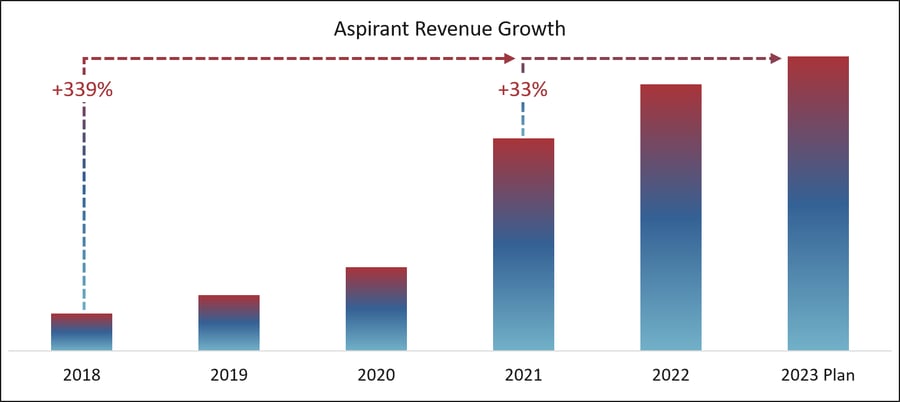

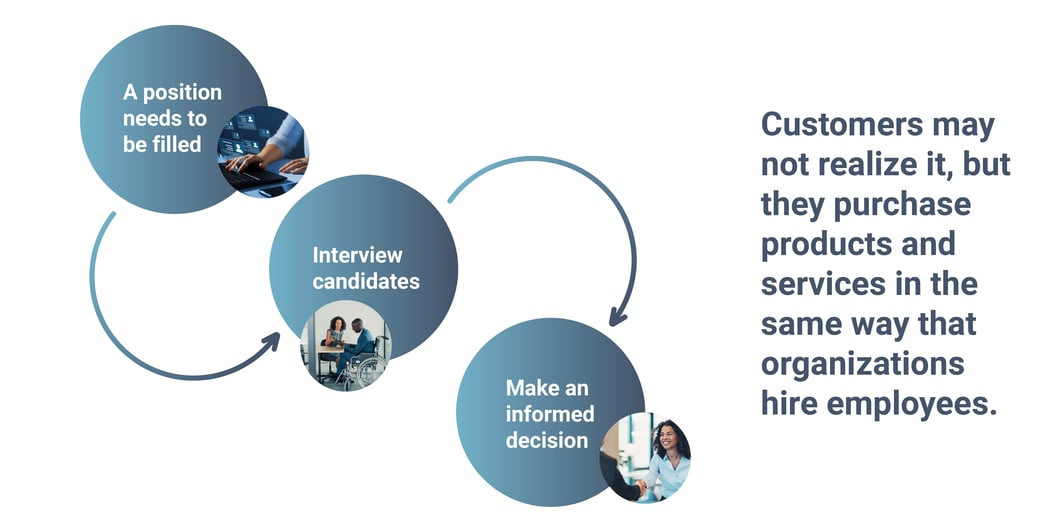




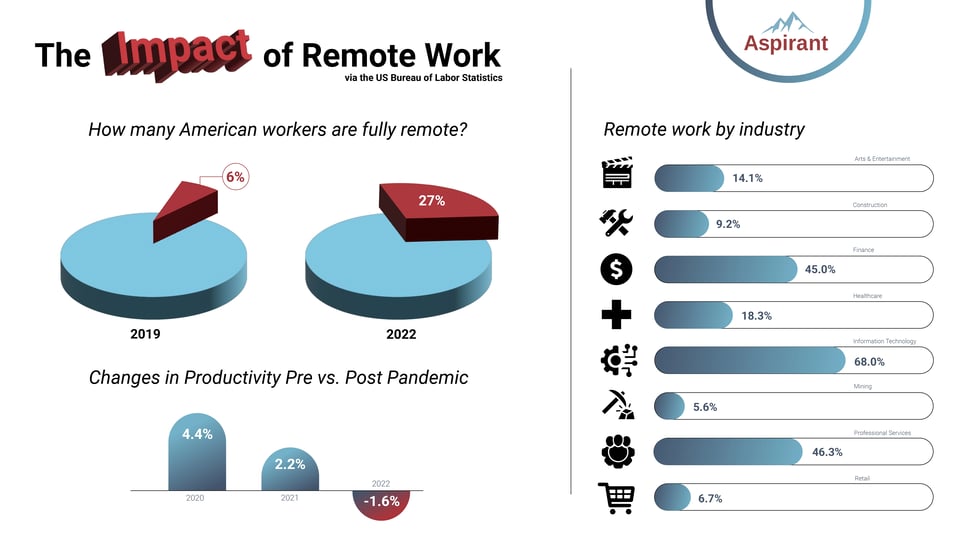







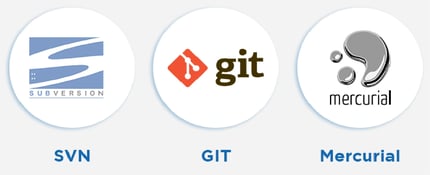


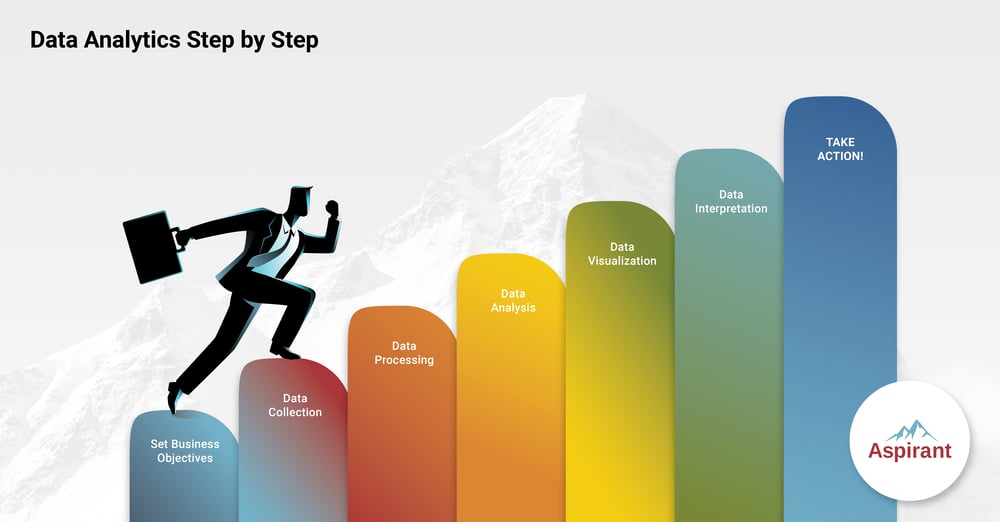

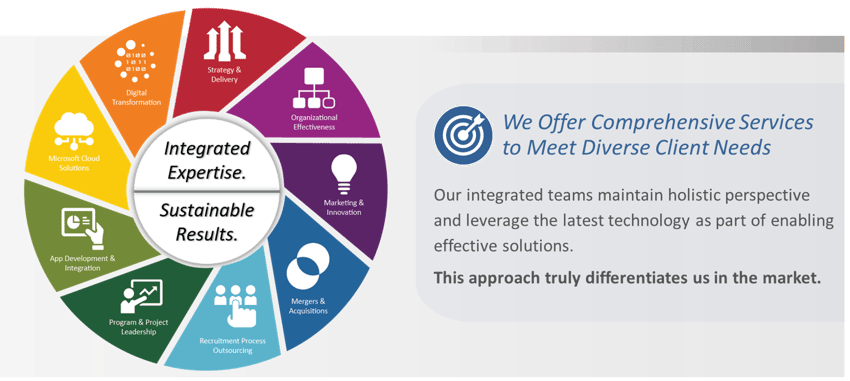

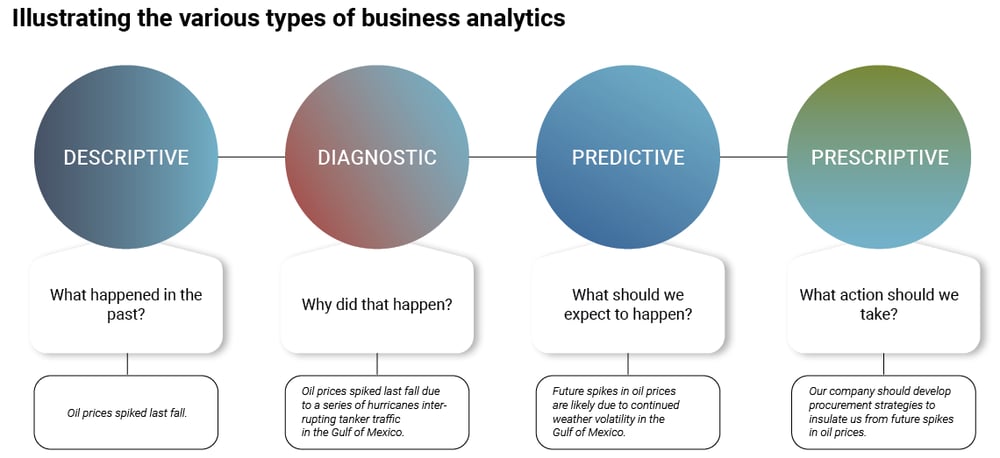





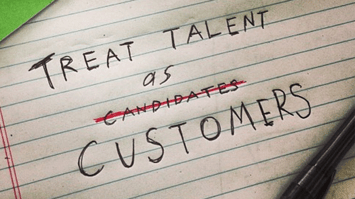
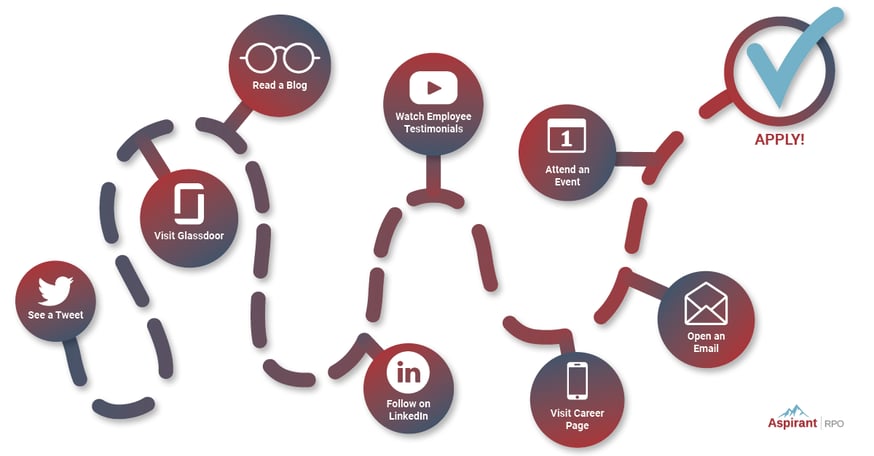














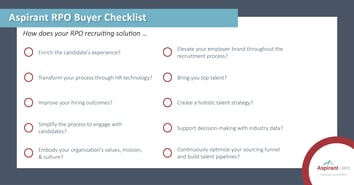


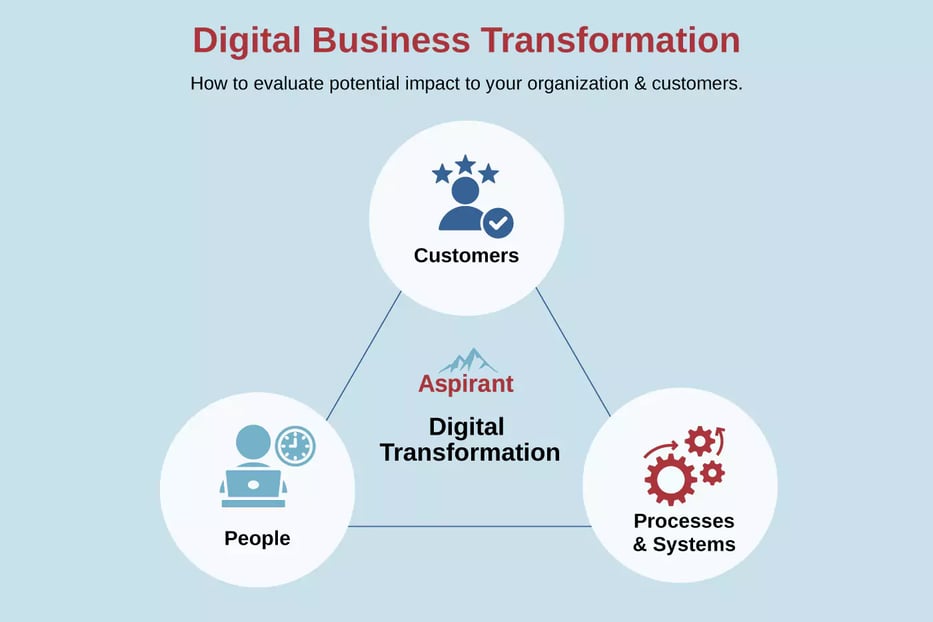

-2.png?width=966&height=505&name=HR%20trends%20that%20impact%20the%20workplace%20(w%20definitions)-2.png)



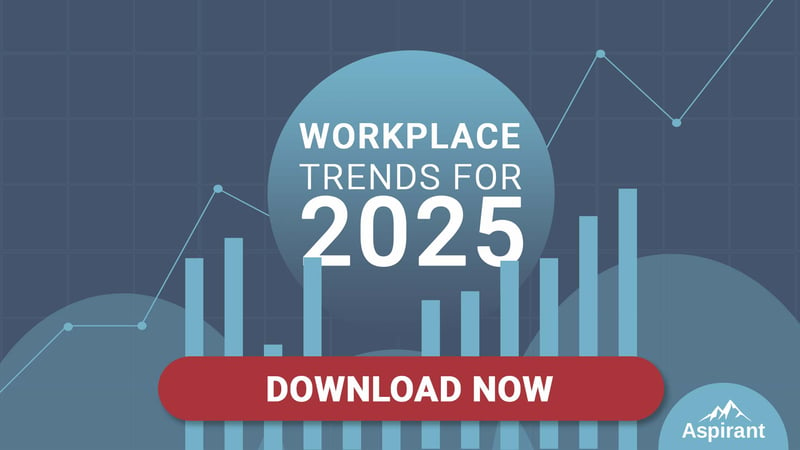








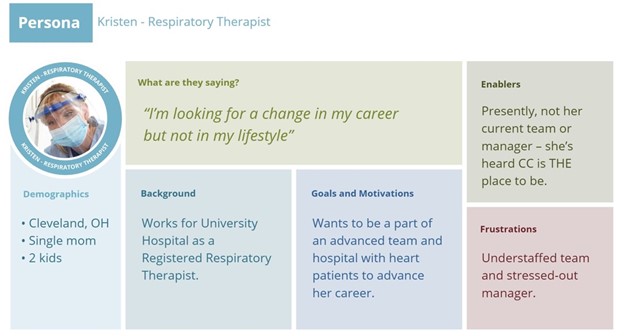



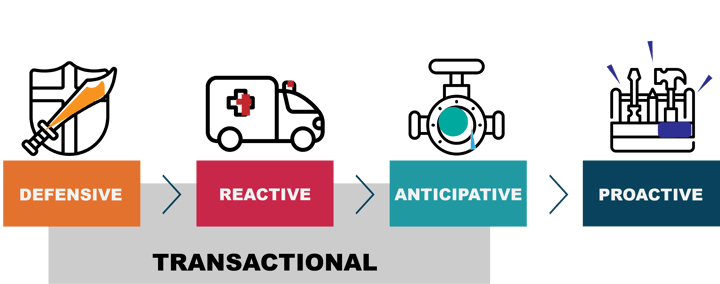
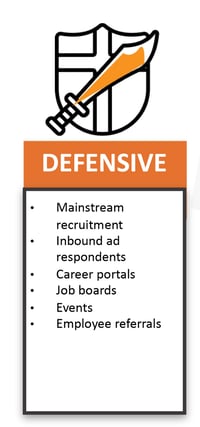 This recruitment model is known for “post and pray” or “pay and spray” techniques that rely on widely broadcasting job advertisements so candidates to come to you. Most traditional organizations operate in this defensive mode; their candidate outreach includes recruitment marketing, posting to job boards, promoting referral programs, and hosting events. Defensive recruiting is about waiting for something to happen before taking action therefore relies primarily on the candidate taking the initiative and “doing the work” of making the connection. And while Defensive recruiting produces the kind of high-volume candidate flow that is appropriate for some roles, the more options a candidate has, the less likely they are to invest time in such a process.
This recruitment model is known for “post and pray” or “pay and spray” techniques that rely on widely broadcasting job advertisements so candidates to come to you. Most traditional organizations operate in this defensive mode; their candidate outreach includes recruitment marketing, posting to job boards, promoting referral programs, and hosting events. Defensive recruiting is about waiting for something to happen before taking action therefore relies primarily on the candidate taking the initiative and “doing the work” of making the connection. And while Defensive recruiting produces the kind of high-volume candidate flow that is appropriate for some roles, the more options a candidate has, the less likely they are to invest time in such a process.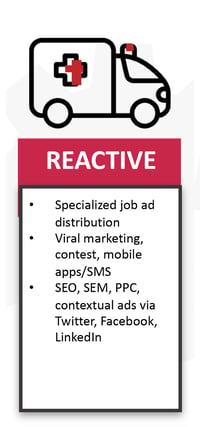 While there are still many aspects of this model that require the candidate to come to you for first contact, Responsive companies have figured out that conventional recruiting methods are insufficient to attract top candidates and will invest considerable time and effort in creating targeted means of attracting them, or they spend time finding candidate resumes on major job boards to reach a wider pool of talent.
While there are still many aspects of this model that require the candidate to come to you for first contact, Responsive companies have figured out that conventional recruiting methods are insufficient to attract top candidates and will invest considerable time and effort in creating targeted means of attracting them, or they spend time finding candidate resumes on major job boards to reach a wider pool of talent.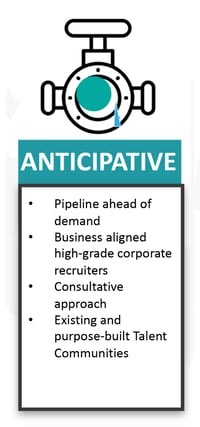 For “hard-to-fill” roles that are high level yet of low criticality, or roles that are unlikely to recur frequently, turning to agencies shifts the labor burden and increases the speed to hire at the price of raising costs. Time is critical in recruiting. Searching a database for qualified candidates can take hours each day. In this model, a recruiter can view hundreds of resumes and find perhaps one or two candidates who qualify. This is a labor-intensive process that lowers the yield per recruiter. The cost incurred in paying for more resumes, and then paying more people to read them, makes this model attractive to contingency-based firms who can afford to specialize in niche areas and work with a wide spectrum of clients with similar hiring needs, thus maximizing their investment. When a good candidate in this quadrant decides to job hunt, there is only a short window to obtain their attention before they are considering other offers. So, if a recruiter does not connect with the candidate when they begin their consideration of a new opportunity or are still looking, all effort is wasted.
For “hard-to-fill” roles that are high level yet of low criticality, or roles that are unlikely to recur frequently, turning to agencies shifts the labor burden and increases the speed to hire at the price of raising costs. Time is critical in recruiting. Searching a database for qualified candidates can take hours each day. In this model, a recruiter can view hundreds of resumes and find perhaps one or two candidates who qualify. This is a labor-intensive process that lowers the yield per recruiter. The cost incurred in paying for more resumes, and then paying more people to read them, makes this model attractive to contingency-based firms who can afford to specialize in niche areas and work with a wide spectrum of clients with similar hiring needs, thus maximizing their investment. When a good candidate in this quadrant decides to job hunt, there is only a short window to obtain their attention before they are considering other offers. So, if a recruiter does not connect with the candidate when they begin their consideration of a new opportunity or are still looking, all effort is wasted.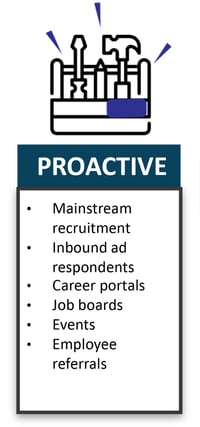 Organizations that use this strategic approach usually designate approximately 20% of their positions as "critical" roles - those are roles that will impede business growth should they go unfilled for any length of time and require a unique approach to find the right candidate. What sets this operational model apart is the use of expert researchers and callers to conduct lead generation and identification based on talent profiles in advance of a requestion. This makes the relationship between the recruiting team and hiring manager more consultative, rather than a “customer/order filler” relationship that is more prevalent in more reactive models.
Organizations that use this strategic approach usually designate approximately 20% of their positions as "critical" roles - those are roles that will impede business growth should they go unfilled for any length of time and require a unique approach to find the right candidate. What sets this operational model apart is the use of expert researchers and callers to conduct lead generation and identification based on talent profiles in advance of a requestion. This makes the relationship between the recruiting team and hiring manager more consultative, rather than a “customer/order filler” relationship that is more prevalent in more reactive models.













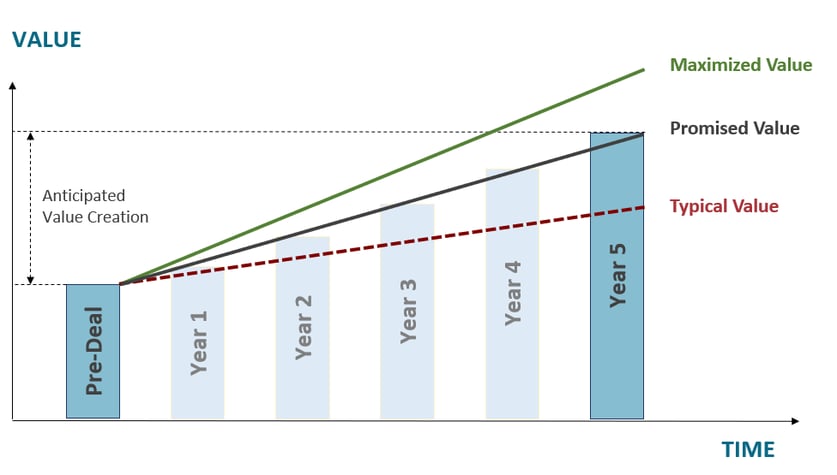




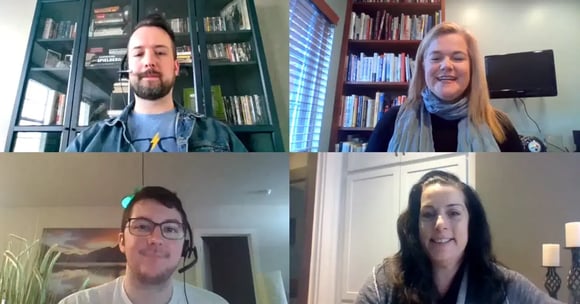
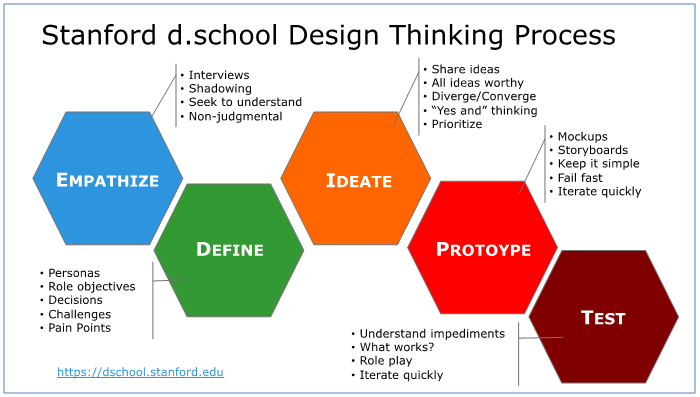

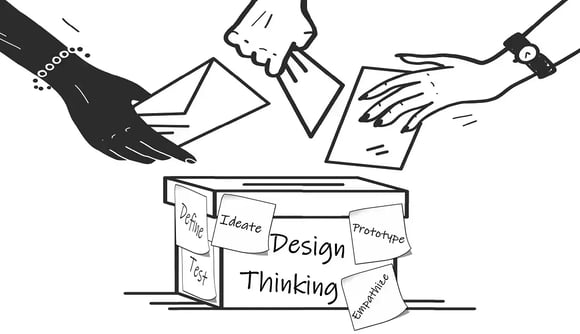
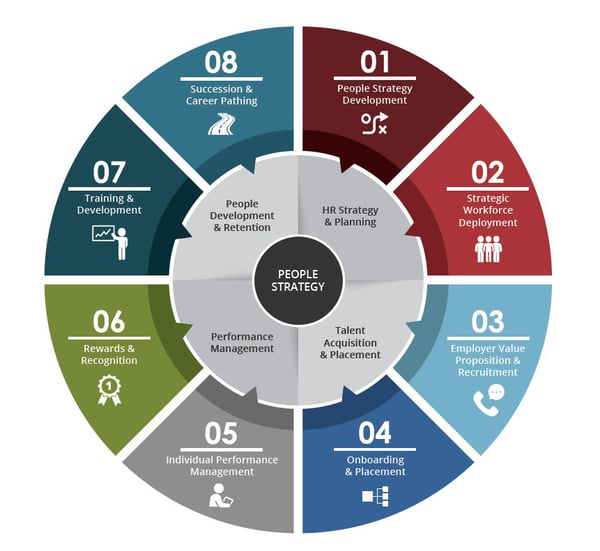 Talent Life Cycle
Talent Life Cycle


